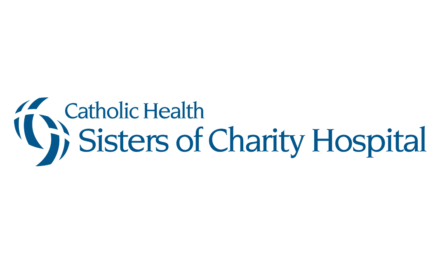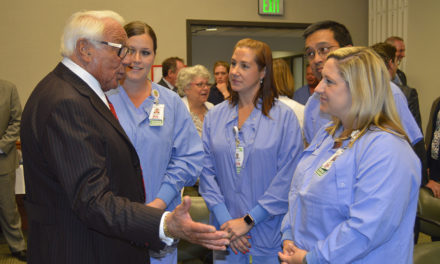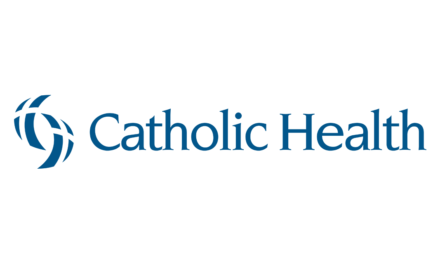United States policies have systematically passed laws focused on assimilating and displacing Native people. In celebration of Indigenous Peoples’ Day, we recognize the tragedy of these actions and honor Indigenous peoples’ resilience, strength, and contributions to our communities.
Our Catholic Health facilities are on land that was territory of the Seneca, Tuscarora, and Tonawanda Band of Seneca Nations, all three of which are members of the Haudenosaunee. Many Western New Yorkers may recognize the Hiawatha belt depicted in the image above as a symbol of the Haudenosaunee. It is named after Hiawatha, the Peacemaker’s helper, and records the time when five nations (Seneca, Cayuga, Onondaga, Oneida, and Mohawk) joined together to form an alliance.
Our acknowledgement of this land is only one step in showing our sincere appreciation to the Seneca, Tuscarora, and Tonawanda Nations. Through our actions and words, we hope to demonstrate our respect for the treaties made on these territories, including The Treaty of Canandaigua and the Buffalo Creek Treaty.
Learn More About the Indigenous People of WNY
Join us in bringing awareness to Western New York’s rich Indigenous culture and heritage, and acknowledging the often overlooked history of the land we call home.
- Partnership for Public Good – Indigenous People of Western New York Fact Sheet
This fact sheet summarizes some of the available history of Indigenous people in what is now known as Western New York and provides information on the contemporary state of Haudenosaunee communities. Intended to shed light on an often overlooked history, it includes demographic, economic, and health data on Indigenous people in Western New York. - Cayuga Nation
The Cayuga Nation is known as “The People of the Great Swamp”. Cayuga land lays between that of the Seneca Nation to the west and the Onondaga Nation to the east. Art, sports, games, music and dance are staples in the Haudenosaunee people’s lives and often intertwined in their day to day activities. - Mohawk Nation
In the Mohawk language, the Mohawk people are referred to as Kanienʼkehá꞉ka or “People of the Flint.” Their Nation is the most easterly section of the Haudenosaunee territory and as such they are known as the Keepers of Eastern Door. The Mohawk Nation is governed by a Council of Chiefs, which continues to promote their cultural preservation through language programs, traditional ceremonies, educational classes, and more. - Oneida Nation
Oneida is an Indigenous sovereign nation with a proud and dignified history of government. The Oneida Nation’s fundamental principles of government actually influenced the framers of the U.S. Constitution. Though the Oneida were originally from New York, they were forced from their homes and moved to a 65,400-acre Oneida Indian Reservation along Duck Creek in Wisconsin. - Onondaga Nation
The Onondaga Nation lies in the middle of the Haudenosaunee territory and is also known as the Central Fire. Since the Onondaga have always lived here, the term ‘reservation’ does not apply to their land. Onondaga is still governed by their traditional government. The tenants of the Great Law have kept the fourteen Onondaga Chiefs and their Clan Mothers the caretakers of their land, ceremonies, and governmental relations with other nations. - Seneca Nation
In their native language the Seneca Nation is known as O-non-dowa-gah, (pronounced: Oh-n’own-dough-wahgah) or “Great Hill People.” The vibrancy of the rich Seneca heritage is evident in the ongoing ceremonies, practices, and cultural events that are infused with dance, music and song, arts, crafts and traditional foods that honor and celebrate Seneca culture. - Tuscarora Nation
Tuscarora means “Shirt Wearers.” It is derived from Skarureh, meaning “long shirt people,” which refers to the long shirt worn by Tuscarora men. The Tuscarora was considered the Sixth Nation of the Haudenosaunee, and still maintains its traditional form of government. Today, the Tuscarora who allied with the colonists and the Oneida during the American Revolution are recognized by the U.S. government as the Tuscarora Nation of New York. - Native American Community Services of Erie & Niagara Counties, Inc.
Native American Community Services (NACS) is a non-profit organization founded in 1975 to provide quality health and social services to the off-reservation Native American population in Erie and Niagara Counties.





